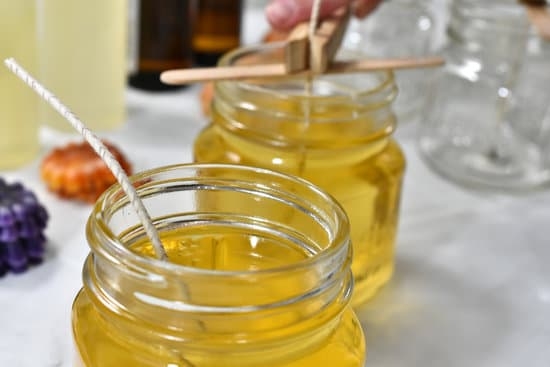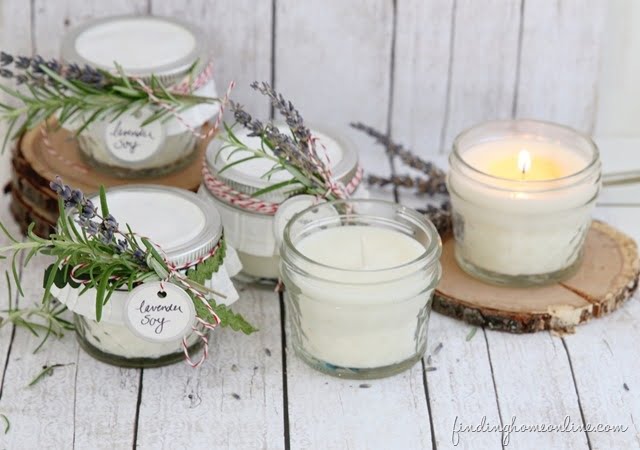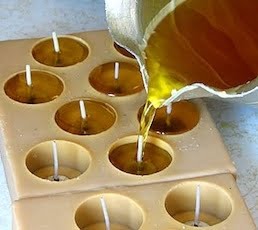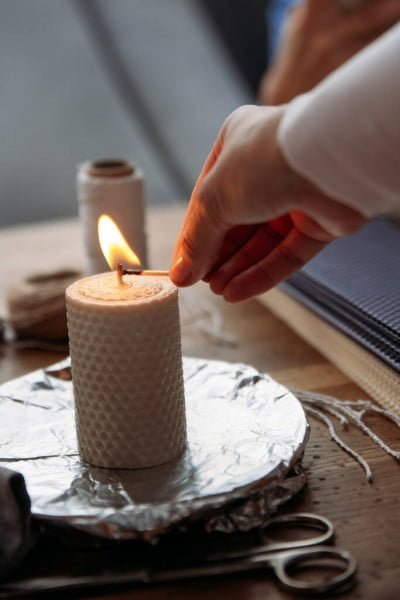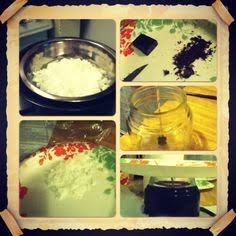Organic scents for candle making have gained popularity among crafters and enthusiasts seeking natural alternatives. Infusing candles with organic fragrances not only enhances the sensory experience but also promotes a healthier environment by avoiding synthetic chemicals. From calming lavender to invigorating citrus and refreshing eucalyptus, organic scents offer a wide range of benefits beyond just their aromatic qualities.
Using organic scents in candles can elevate the ambiance of any space while providing therapeutic effects. The use of natural ingredients like essential oils not only creates a pleasant aroma but also promotes relaxation, clarity, and overall well-being. With an increasing focus on sustainability and eco-conscious practices, choosing organic scents for candle making aligns with the values of many consumers looking for non-toxic, environmentally friendly options.
In this article, we will explore the importance of organic scents in candle making, the advantages they offer over synthetic fragrances, popular choices for organic scents like lavender, citrus, and eucalyptus, as well as tips for creating unique fragrance blends. Whether you’re a seasoned candle maker or just starting out in DIY projects, incorporating organic scents into your creations can add a touch of nature’s goodness to your living space.
Benefits of Using Organic Scents in Candles
Organic scents offer a multitude of benefits when used in candle making, not only for the environment but also for personal health and well-being. By incorporating organic scents derived from natural sources such as plants, fruits, and flowers, you can create a more sustainable and eco-friendly product. These scents are free from harmful chemicals and toxins typically found in synthetic fragrances, making them a safer choice for your home environment.
Health Benefits
One of the key advantages of using organic scents in candles is the potential health benefits they offer. Organic scents are often associated with aromatherapy, which involves using natural fragrance to improve physical and emotional well-being.
For example, lavender has calming properties that can help reduce stress and promote relaxation, while citrus scents like lemon or orange can uplift your mood and increase energy levels. Eucalyptus is known for its invigorating scent that can clear sinuses and improve respiratory function.
Environmental Impact
Choosing organic scents for candle making also has a positive impact on the environment. Organic ingredients are typically produced using sustainable farming practices that minimize harm to the ecosystem. By opting for organic scents sourced from ethically managed farms, you are supporting environmentally conscious businesses that prioritize biodiversity conservation and soil health. Additionally, organic farming practices help reduce pollution and carbon emissions compared to conventional farming methods, making it a more planet-friendly choice for candle makers.
Popular Organic Scents for Candle Making
Lavender, citrus, and eucalyptus are among the most popular organic scents used in candle making due to their unique and refreshing aromas. Lavender is well-known for its calming properties, making it a favorite choice for candles meant to promote relaxation and stress relief. Its sweet and floral fragrance creates a soothing atmosphere that can help enhance sleep quality and overall well-being.
Citrus scents, such as lemon, orange, and grapefruit, are vibrant and invigorating options for candles. These fruity aromas are often used to uplift moods and create a cheerful ambiance in any space. Citrus scents are known for their energizing properties, making them ideal choices for candles meant to boost focus and productivity during work or study sessions.
On the other hand, eucalyptus is a popular organic scent that has a refreshing and invigorating aroma with hints of minty coolness. Eucalyptus candles are often used for their cleansing properties, helping to purify the air and clear the mind. The crisp fragrance of eucalyptus is often associated with promoting respiratory health and providing relief from congestion or allergies.
How to Choose the Right Organic Scents for Your Candles
When it comes to creating organic candles, choosing the right scents is crucial in ensuring a high-quality product that appeals to consumers. With an array of organic scents available, selecting the perfect fragrance can be both exciting and overwhelming. However, by considering a few key factors, you can determine which organic scents will best suit your candles.
Consider Your Target Audience
One of the first aspects to consider when choosing organic scents for your candles is your target audience. Different scents evoke various emotions and preferences among individuals. For instance, lavender is often associated with relaxation and tranquility, making it ideal for candles intended for stress relief or bedtime routines. Citrus scents, on the other hand, are known for their energizing and uplifting properties, making them suitable for candles meant to boost mood or productivity.
Seasonal Considerations
Another important factor to keep in mind when selecting organic scents for candle making is the season during which the candles will be used. For example, during the spring and summer months, fresh floral scents like jasmine or rose may be more appealing to customers.
In contrast, warm and cozy fragrances such as cinnamon or vanilla are typically favored during the fall and winter seasons. By aligning your scent choices with seasonal preferences, you can cater to the changing tastes of consumers throughout the year.
Experimentation and Personal Preference
Ultimately, choosing organic scents for your candles should also involve an element of experimentation and personal preference. While certain fragrances may be popular among consumers, it’s essential to choose scents that resonate with you as a candle maker.
Experimenting with different combinations of organic scents can also lead to unique fragrance profiles that set your candles apart from others on the market. Trusting your instincts and allowing creativity to guide your scent selection process can result in truly exceptional products that appeal to a wide range of customers looking for all-natural alternatives in candle options.
DIY Organic Candle Making
Are you looking to create your own organic candles at home using natural scents? DIY organic candle making is not only a fun and rewarding activity but also allows you to customize the fragrance of your candles according to your preferences. By using organic scents for candle making, you can enjoy the benefits of aromatherapy while promoting a healthier environment in your home.
To help you get started on your DIY organic candle making journey, follow this step-by-step guide:
- Choose Your Wax: Opt for natural waxes such as soy, beeswax, or coconut wax for a cleaner burn.
- Select Your Wick: Use cotton or wooden wicks to ensure an even and clean burn.
- Decide on Your Container: Pick a heat-resistant container that reflects your style and complements the scent you will be using.
Next, it’s time to select the organic scents that will infuse your candles with delightful fragrances. Popular choices include:
- Lavender: Known for its calming and soothing properties, lavender is perfect for creating a relaxing atmosphere in your space.
- Citrus: Refreshing and invigorating, citrus scents like orange or lemon can uplift your mood and brighten up any room.
- Eucalyptus: With its fresh and clean aroma, eucalyptus is great for promoting respiratory health and creating a spa-like ambiance.
Now that you have all your materials ready, melt the wax, add the organic scent of your choice, pour the mixture into your container with the wick in place, and let it cool and solidify. Enjoy the beautiful glow and natural fragrance of your homemade organic candle.
Where to Source High-Quality Organic Scents for Candle Making
When it comes to creating candles with organic scents, sourcing high-quality ingredients is essential to achieve the best results. There are various options available for obtaining organic scents for candle making, ranging from local suppliers to online stores specializing in natural products.
One option is to visit local farmers’ markets or stores that sell essential oils and other natural ingredients. These places often carry a selection of organic scents that are perfect for candle making. By purchasing from local vendors, you can also support small businesses and ensure the freshness and quality of the ingredients.
Another popular choice for sourcing organic scents for candle making is to find reputable online retailers that specialize in natural products. These online stores offer a wide range of organic essential oils and fragrances specifically designed for use in candles. Many of these retailers provide detailed information about the sourcing and production methods of their products, allowing you to make an informed decision before making a purchase.
For those who prefer a more hands-on approach, consider growing your own herbs or flowers to create unique organic scents for candle making. By cultivating your own plants, you can harvest fresh botanicals and extract their natural essences to use in your homemade candles. This not only ensures the purity of the scents but also adds a personal touch to your creations.
| Organic Scent Source | Advantages |
|---|---|
| Local Farmers’ Markets or Stores | Support local businesses, ensure freshness |
| Online Retailers Specializing in Natural Products | Wide range of options, detailed product information |
| Growing Your Own Herbs or Flowers | Purity of scents, personalized touch |
Tips for Mixing Organic Scents to Create Unique Fragrances
When it comes to creating unique and captivating scents for your candles, mixing organic scents can open up a whole new world of possibilities. By combining different organic essential oils, you can create custom fragrances that stand out and appeal to a wide range of preferences. One key benefit of blending organic scents is the ability to tailor the aroma to suit specific moods or occasions, whether you’re aiming for a calming atmosphere or an invigorating burst of energy.
To start mixing organic scents for your candles, consider the basic principles of fragrance blending. It’s essential to understand the top, middle, and base notes of each essential oil you plan to use.
Top notes are the first scents perceived when the candle is lit, followed by middle notes that emerge after the top notes dissipate, and base notes which provide depth and longevity to the overall fragrance. Experiment with different combinations of these notes to create a well-balanced and harmonious scent profile.
One example of a popular blend is combining lavender, citrus, and eucalyptus organic essential oils. Lavender provides a calming and floral top note, citrus adds a refreshing and uplifting middle note, while eucalyptus contributes a cool and invigorating base note.
This combination not only offers a multi-dimensional aroma but also enhances the therapeutic properties of each individual oil. Feel free to explore various proportions of each oil in your blends until you find the perfect balance that resonates with your preferences or intended use for the candles.
| Organic Essential Oils | Properties |
|---|---|
| Lavender | Calming and Floral |
| Citrus | Refreshing and Uplifting |
| Eucalyptus | Cool and Invigorating |
Organic Scents vs Synthetic Fragrances
When it comes to choosing scents for candle making, one of the key decisions candle enthusiasts face is whether to opt for organic scents or synthetic fragrances. While both options have their own set of advantages, there are some distinct differences between the two that can influence your choice.
Here are some key points to consider when comparing organic scents with synthetic fragrances for candle making:
- Ingredients: Organic scents are derived from natural sources such as plants, flowers, and fruits, while synthetic fragrances are created in laboratories using artificial chemicals.
- Scent Quality: Organic scents tend to have a more authentic and pure aroma compared to synthetic fragrances, which can sometimes come off as overly artificial or generic.
- Health Considerations: Many people prefer organic scents for candle making due to concerns about potential health risks associated with synthetic chemicals like phthalates and parabens. Opting for organic ingredients can provide peace of mind for those sensitive to certain substances.
Ultimately, the choice between organic scents and synthetic fragrances comes down to personal preference. Some candle makers may prioritize sustainability and natural ingredients, while others may lean towards the wider range of scent options available with synthetic fragrances. Whichever option you choose, it’s essential to experiment with different scents and brands to find what works best for your candles and suits your values as a candle enthusiast.
Remember that the beauty of candle making lies in its versatility, so don’t be afraid to explore a variety of organic scents and blends to create unique and captivating fragrances that will delight your senses and those around you.
Conclusion
When it comes to creating a calming and inviting atmosphere in your home, organic scents for candle making offer a natural and sustainable option. By harnessing the power of nature through scents like lavender, citrus, and eucalyptus, you can elevate your candle-making experience. These organic scents not only provide aromatherapeutic benefits but also contribute to a healthier environment by avoiding the use of synthetic fragrances.
Choosing the right organic scents for your candles is crucial in achieving the desired ambiance. Whether you prefer something relaxing like lavender or invigorating like citrus, there are countless options to explore. Experimenting with different combinations can lead to unique fragrances that reflect your personal taste and style. With a focus on all-natural ingredients, organic scents take candle making to a whole new level of craftsmanship and mindfulness.
In conclusion, incorporating organic scents into your candle-making practice is not only good for the environment but also for your well-being. By opting for natural ingredients sourced from reputable suppliers, you can enjoy the benefits of aromatherapy while indulging in the art of creating beautiful candles. Whether you’re a seasoned candle enthusiast or just starting out, embracing organic scents will undoubtedly enhance your crafting experience and enrich the ambiance of your space.
Frequently Asked Questions
What Essential Oils Are Safe to Put in Candles?
When selecting essential oils to put in candles, it is important to choose ones that are safe for burning and have a pleasing scent. Popular options include lavender, peppermint, eucalyptus, and citrus oils like lemon or orange. It is essential to do research on each oil’s safety guidelines before using them in candles.
What Scents to Add to Homemade Candles?
When adding scents to homemade candles, the options are endless. Depending on personal preference, scents such as vanilla, cinnamon, rosemary, or even coffee can be added to create a unique aroma. It is essential to consider how these scents blend together and the overall ambiance they will create when choosing what to add to homemade candles.
How Do You Make Natural Fragrance Oil for Candles?
Making natural fragrance oil for candles involves blending essential oils with a carrier oil such as almond or jojoba oil. The process includes measuring out the desired quantities of each oil and combining them carefully while ensuring that the final mixture is well-balanced. Experimenting with different combinations allows for customization based on personal scent preferences.

Welcome to my candle making blog! In this blog, I will be sharing my tips and tricks for making candles. I will also be sharing some of my favorite recipes.

